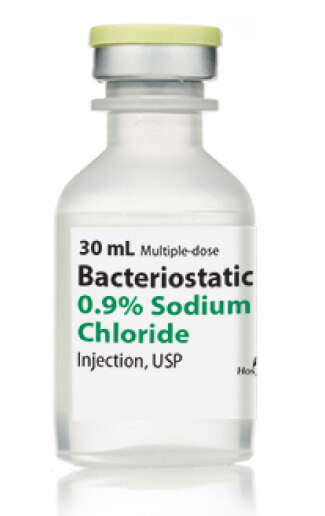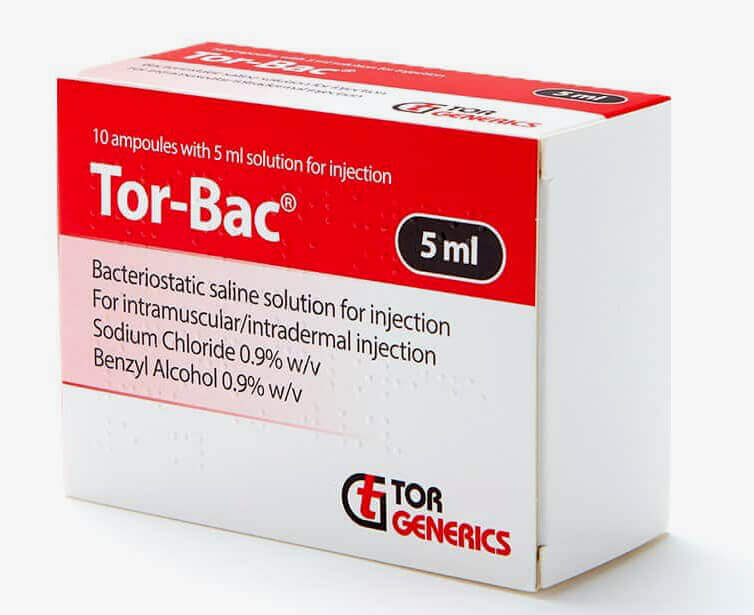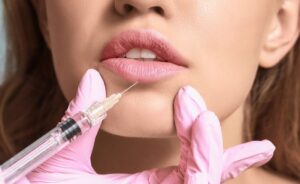If you have ever had a cosmetic toxin injection, you may have noticed that the specialist used a diluent water solution to mix or thin the substance beforehand. People often assume that this is a bad thing and the clinic is trying to cut corners and save money. However, there is a reason that water diluents are used for injection mixing and they have a number of benefits.
Cosmetic toxins usually come in powdered form and must be mixed before they can be injected with a syringe. Water diluents like sodium chloride are used to dissolve the powdered toxins and achieve the right consistency, so they can be injected into the skin. Mixing injections in this way allows you to carefully manage the amount of liquid mixed with the toxin, so it can spread under the skin more effectively.
The diluents are specifically chosen because they are completely harmless. They can be injected into the body safely and they will not have any impact on the way that the toxins work either.
You can use cosmetic toxins on their own and get good results, but there are significant benefits to using water diluents.
Types of Water Diluents
When using a water diluent, it’s important to understand the different types and the relative benefits of each. These are some of the most common water diluents to use with toxins.
1. Sodium chloride solution

Sodium chloride solution is a basic saline solution designed for cleaning, sterile irrigation, and dilution. The solution is 0.9% sodium chloride and the rest is water, with no other additives. It is a completely benign solution that won’t have any impact on the body, making it perfect for mixing with toxins. A sterile sodium chloride solution can be used for bocouture mixing, allowing you to get a perfect consistency. Sodium chloride solution comes in a 10-pack of 10ml vials, which are each more than enough to dilute cosmetic toxins before use.
When using sodium chloride solution to mix and dilute toxins, draw a small amount of the solution into a syringe and inject it into the filler. Gently turn the vial, without shaking it vigorously. It is important that the solution is completely mixed so the consistency is even throughout, otherwise, you may get lumps and bumps. Once it is suitably mixed, you can inject the solution as normal.
2. Bacteriostatic

A combination of water and 0.9% sodium chloride, with added benzyl alcohol is used to make this completely sterile Bacteriostatic saline solution. The benzyl alcohol acts as a preservative in the solution. Bacteriostatic solution is sold in 30ml vials, which can be syringed and mixed into powders or used to dilute toxins.
Bacteriostatic can be used for mixing powder fillers like Azzalure or Bocouture so they can be injected, as well as diluting toxins. You can use the same method as you would with sodium chloride, paying particular attention to the amount of solution you add. You can use 1-4 centilitres, but 2 gives the ideal consistency. Diluting too much increases the chances of swelling as you inject a higher volume.
3. Tor-Bac

Tor-Bac is a 0.9% sodium chloride saline solution with 9mg/ml of benzyl alcohol added as a preservative. It is safe for intradermal and intramuscular applications, so it can be used with all types of toxins. It comes in a 10 pack of 5ml vials. These are the ideal size for diluting treatments without increasing the volume too much. This is crucial when using toxins around the eyes because precision is important. Diluting too much makes it difficult to get a controlled application and it can easily spread into other areas of the face.
Things That Make Water Diluents Popular
There are several reasons why people choose to dilute their toxins before injecting them.
Firstly, it makes the whole process a lot more comfortable for you. When the solution is thinner,it can be injected using a smaller needle, which causes less trauma and lasting damage to the skin.
Toxins can also cause side effects, but thinning them beforehand reduces the likelihood of complications. It is common to experience swelling and bruising around the injection site, facial drooping and weakness, and localised pain. Although you may still experience side effects with diluted toxins, it is less common because the filler is not as concentrated.
The results are also improved by thinning toxins. Botox and other similar treatments are toxins, which can cause damage if the concentration is too high. In order to get a natural effect, the toxins need to spread evenly under the skin in the target area without collecting too much. If the solution is not distributed properly, you will have noticeable lumps and bumps on the skin. A thicker solution doesn’t spread as evenly, especially in areas like the eyes where the skin is very delicate. By diluting the toxins with a higher concentration of diluents, you can ensure that you get an even result that looks natural. The results tend to last longer when the toxins are diluted first too.
Using toxins on their own without diluting them is fine, but the results are drastically improved if you use water diluents with them. It is a more comfortable experience because you can use a smaller needle. Once injected, the solution will spread more evenly under the skin, giving you a natural feel that does not look like it has been achieved with cosmetic treatments. Those results will last longer too, so you don’t need to reapply as often.
If you plan to use cosmetic toxins to iron out fine lines and fight the signs of ageing, you can find a full range of suitable products online from Revolve Medicare. All of the diluents we sell are completely safe for injecting into the skin. Follow the link to learn how to order, and start browsing the range today.





